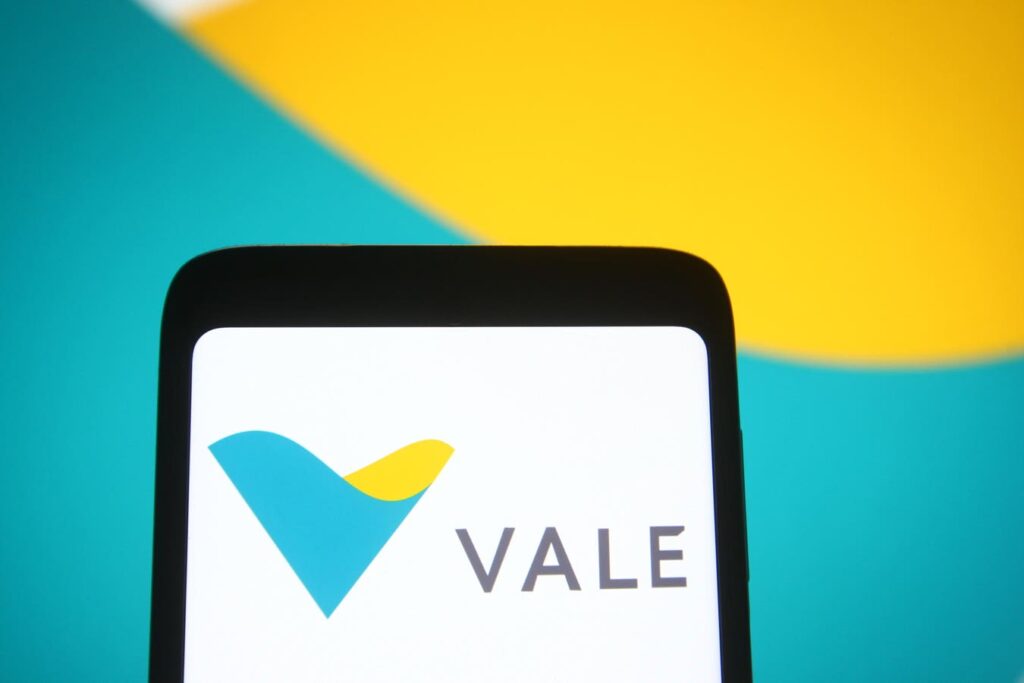Vale (NYSE:VALE) stock has not performed particularly well this year, increasing by approximately 10% year to date. In comparison, competitor ArcelorMittal (NYSE:MT) experienced a 36% rise, and United States Steel stock (NYSE:X) saw an increase of 26% during the same timeframe. So what is going on with VALE, and what trends might influence the company’s future performance?
Weak Q1 Earnings
Vale recently announced its Q1 2025 earnings, reflecting the effects of decreasing iron ore prices despite operational efficiencies. Revenue was reported at $8.12 billion, a 4% decline year-over-year, marginally below the consensus estimate of $8.39 billion. Net Income stood at $1.39 billion, down 17% from $1.67 billion in Q1 2024. Free Cash Flow amounted to $504 million, significantly down from $2.2 billion in Q1 2024. Iron Ore production decreased by 4.5% to 67.7 million metric tons due to heavy rainfall in Brazil. However, sales volumes increased by 3.6% to 66.1 million tons, helped by inventory drawdowns. The average realized iron ore price was $90.80 per ton, nearly a 10% reduction compared to the previous year. Copper production rose by 11% to roughly 90,900 tons, while nickel production also increased by 11% to about 43,900 tons.
Despite the challenges posed by declining commodity prices and adverse weather events, Vale’s emphasis on cost efficiency and strategic project development positions it well to navigate the current market landscape. The company’s focus on operational optimization and diversification is expected to bolster its performance in the upcoming quarters. See Buy or Sell VALE.
For those investors seeking potential gains with reduced volatility, the High Quality portfolio has significantly outperformed the S&P 500, yielding over 91% returns since its inception.
Global Tariff Landscape and Vale’s Position
In April 2025, the U.S. government reinstated a 25% tariff on steel imports. These actions have disrupted global trade patterns, particularly within the steel sector, which is closely related to iron ore demand. Vale’s CEO, Gustavo Pimenta, indicated that the company has not yet observed substantial effects from these tariffs, primarily because Vale does not export significant amounts of iron ore to the U.S. However, he acknowledged that a possible global economic slowdown stemming from escalating trade tensions could indirectly influence commodity markets, including iron ore.
Strategic Acquisitions and Agreements
Vale has acquired the remaining 50% interest in the Baovale iron ore project from its Chinese partner Baosteel, achieving full control of the Agua Limpa mine in Minas Gerais, Brazil. The company also entered into agreements with Eneva and Origem Energia to purchase natural gas under free market conditions, supporting its goal of sourcing 90% of its natural gas from the free market by 2025.
VALE Stock Good Value?
The company intends to reduce cash costs by 15% in 2025 compared to 2024 figures. This strategy involves optimizing logistics, reducing waste, and utilizing automation to sustain profitability amidst increasing trade barriers. Vale has increased shipments to Europe by 18% in Q1 2025, taking advantage of the European Union’s carbon border adjustments that favor low-emission suppliers. The company is now prioritizing high-grade iron ore (65% Fe content), which currently accounts for 45% of traded volumes, up from 30% in 2023. This shift is aligned with mills seeking efficiency in order to reduce energy costs. See how has VALE valuation changed over time.
Vale’s current Price-to-Earnings (P/E) ratio is at 6.6x, significantly lower than the 9.3x levels in 2020, indicating a possible undervaluation. In contrast, peers like ArcelorMittal currently have a P/E ratio of 17.4x, while United States Steel’s P/E stands at 22x. Vale’s current stock price appears to be substantially beneath various intrinsic value estimates, suggesting it may indeed be a worthwhile value investment. Nevertheless, the volatility of the commodity market should be taken into account.
While VALE represents a solid stock, if you prefer even less volatility while preserving upside potential, consider the High Quality portfolio, which has outperformed the S&P 500 and achieved returns exceeding 91% since inception.
Read the full article here


